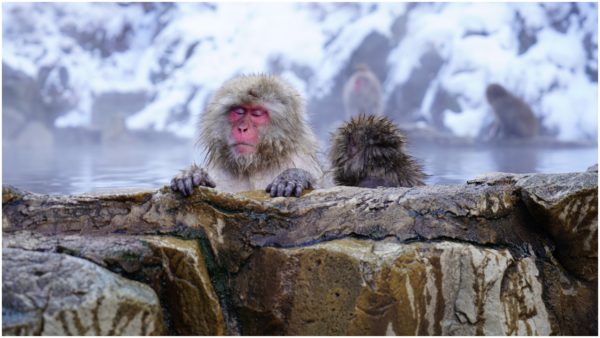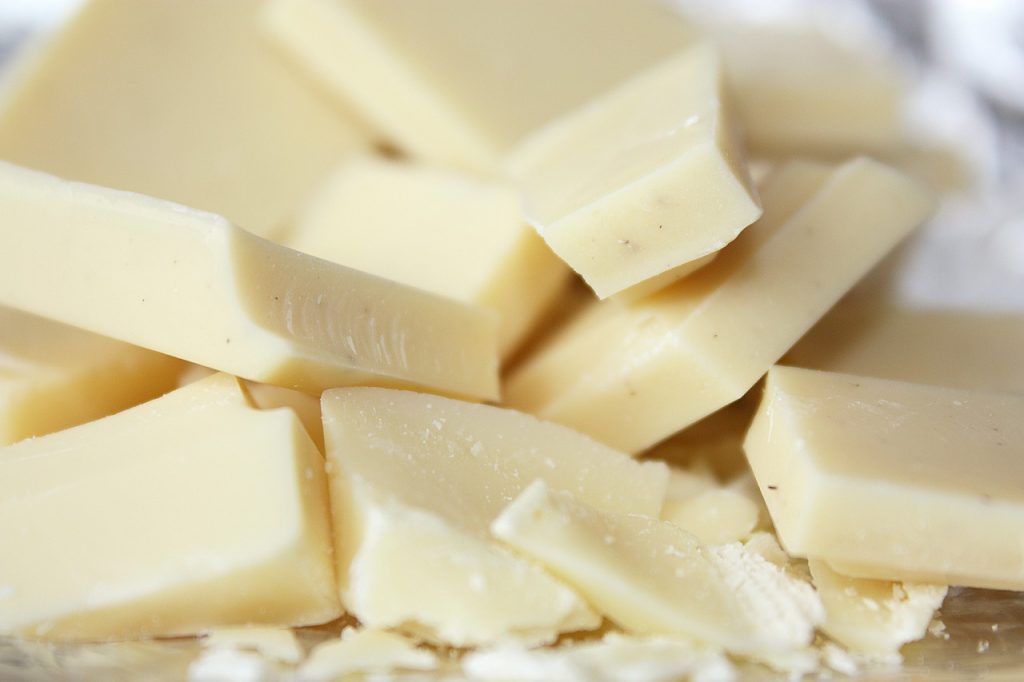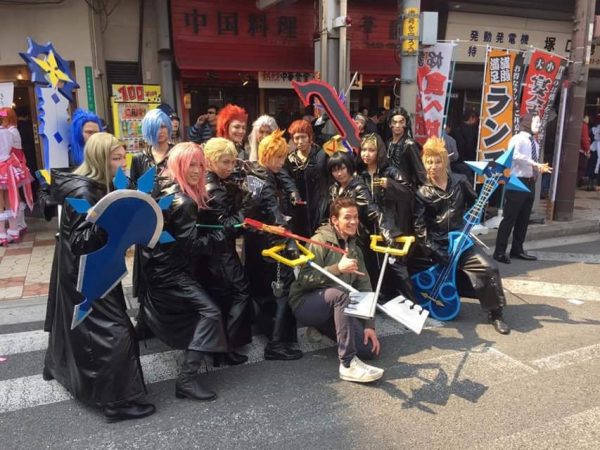Japan’s public baths are famous around the world, mostly for 3 things:
- you gotta get naked in front of a bunch of strangers
- sometimes they put fun, weird things in the water
- NO TATTOOS ALLOWED
But, we promise you, it can be an awesome experience. Pretty much everyone on the DEJAPAN team’s been to a public bath at least once.
Whether you’ve taken a dip at a proper Japanese onsen or not, you might get tempted to try it at home. We’ve got some advice on that, on everything from bathhouse manners to making sure you don’t electrocute yourself. We’ll scrub your back, and you… yeah… you just sit there and enjoy, okay?
There’s something in the water…
Onsen, sentou, super sentou, inflatable pool in front of some guy’s house – what’s the difference?
Well, let’s start with an onsen. The kanji (温泉) mean ‘hot spring’. To be classed as an onsen, the water must be min. 25 degrees at the source. Even if it’s cooled, moved, and reheated later, the source temperature’s what counts. Oh, and that water’s also gotta meet at least 1 of 19 standards for mineral levels.
As a result, authentic natural onsen aren’t exactly on every street corner. You want your bath rich in nutrients, you’ve gotta travel for it.

The difference with a sentou (銭湯) is convenience. ‘Money’ + ‘hot water’ = local indoor baths in locally-sourced waters. And that could still be a hot spring, depending where you live. If a sentou’s powered by proper onsen water, it’ll shout about it.
Some sentou have a ‘rotemburo’ outdoor bath. Addictive in winter – you won’t wanna get back out.
A super sentou isn’t your Sunday morning power(ful) rangers show. (That’s super sentai. Easy mistake to make.) It’s more like a day spa.
The ‘super’ reps all the extras you get with your bath water. Like an on-site restaurant, massage/relaxation rooms, arcade games, saunas, and places to just sit and watch TV.
How to take a bath in Japan (we’re serious)
Onsen etiquette isn’t something to worry about in your own house. But we’ll run through some of it, just in case. If you ever visit a real onsen or sentou in Japan, this is all gonna be good to know.
You gotta be naked. No Speedos, no bikini, no swim cap, no socks. There’ll be coin lockers to hold all your stuff.
The ‘no tattoos’ thing is (slowly) changing, but don’t risk it if you’re unsure. If you can, cover all tattoos with skin-coloured plasters. Can’t use concealer, because it might wash off. Many places will also ask you to put your hair up if it’s longer than shoulder length, and to take off all your face makeup.
Don’t forget your towel. Never read The Hitchhiker’s Guide to the Galaxy? There are no onsen in it, but towels are important. And don’t get yours wet, either, unless it’s with cold water after a sit in the sauna. Most people keep their towel dry by piling it on their head.

Super important: wash all over before you get into any of the baths.
If you thought ‘bath’ meant ‘where you wash your body’, Japan’s got news. Public baths are for soaking in. At the point you lower yourself into the water, you need to be squeaky clean already. There’ll be showers at one side, near the changing rooms. You sit down for these, so look low. Every shower station’s got an stool to sit on, and some basic toiletries. Wash there, rinse off properly, then pick a bath.
It helps to pour some of the warm water over yourself before getting in. That way the bath temperature’s less of a shock to the system.
Then – finally! – you can settle into the water and relax. Aim for about 10-15 mins in each bath, and don’t get up too fast. Take a break on a chair/bench if you get light-headed. Our personal tip is to keep a sports drink in your locker.
If you see 電気風呂 written next to a bath, be careful! It reads ‘denkiburo’, a bath with a weak electric current running through it. To some, it’s refreshing. To others, it’s kinda like being tasered. Sit in a denkiburo at your own risk.
When leaving an onsen, don’t rinse off on your way out. You want that mineral-rich water absorbing into your skin. At a sentou, showering again before going home’s up to you.
Onsen essentials you can buy online
Let’s start with that shower stool. They’re everywhere. Why? Because some people like to wash outside their home bath as well. The stool/bucket material tends to be plastic at a sentou and wood for an onsen. Sit somewhere you can reach your shampoo, conditioner, and body soap even with bubbles in your eyes.
Next, make sure your towel’s on hand. Face/head towels for onsen use tend to be long and thin. A quick-drying one’s an even better idea. Save the huge, fluffy towels for when you’re done.
And no onsen is complete without an infused bath. If your tap water’s not cutting it, get a mineral infuser.

Japan-style bath salts, bath powders and bath bombs can have scents like sakura, yuzu, and plum. Or weirder ones: ever had an ice cream bath? Cold Stone Creamery does bath bombs based on their signature scoops.
A huge pool of Japan merch to soak up
DEJAPAN helps you experience real Japanese stuff, from wherever you are. Hell, you can browse our website while you’re in the bath, if you want. (We’re not responsible if you drop the phone/tablet in the water, by the way…)




